Alex Chalfin
Restructurable Activation Networks
Aug 17, 2022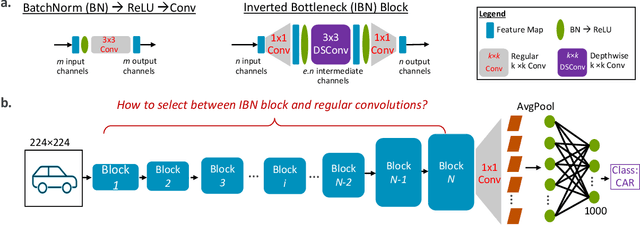

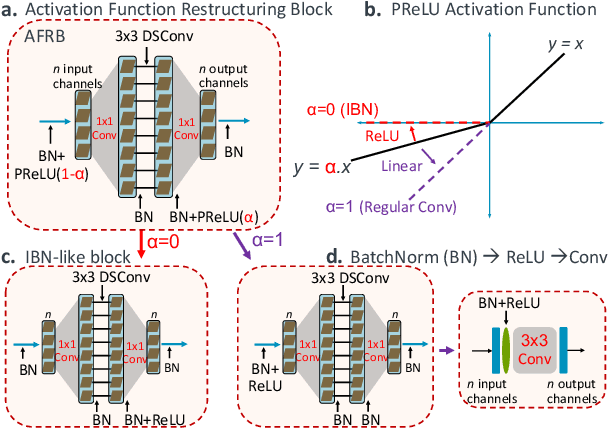
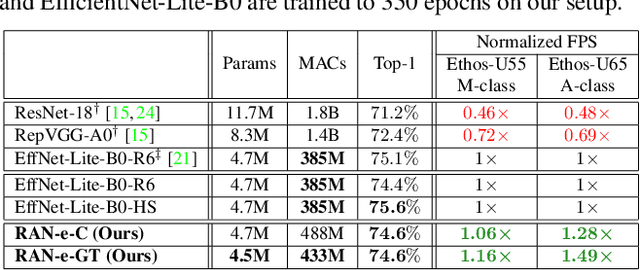
Abstract:Is it possible to restructure the non-linear activation functions in a deep network to create hardware-efficient models? To address this question, we propose a new paradigm called Restructurable Activation Networks (RANs) that manipulate the amount of non-linearity in models to improve their hardware-awareness and efficiency. First, we propose RAN-explicit (RAN-e) -- a new hardware-aware search space and a semi-automatic search algorithm -- to replace inefficient blocks with hardware-aware blocks. Next, we propose a training-free model scaling method called RAN-implicit (RAN-i) where we theoretically prove the link between network topology and its expressivity in terms of number of non-linear units. We demonstrate that our networks achieve state-of-the-art results on ImageNet at different scales and for several types of hardware. For example, compared to EfficientNet-Lite-B0, RAN-e achieves a similar accuracy while improving Frames-Per-Second (FPS) by 1.5x on Arm micro-NPUs. On the other hand, RAN-i demonstrates up to 2x reduction in #MACs over ConvNexts with a similar or better accuracy. We also show that RAN-i achieves nearly 40% higher FPS than ConvNext on Arm-based datacenter CPUs. Finally, RAN-i based object detection networks achieve a similar or higher mAP and up to 33% higher FPS on datacenter CPUs compared to ConvNext based models.
Collapsible Linear Blocks for Super-Efficient Super Resolution
Mar 17, 2021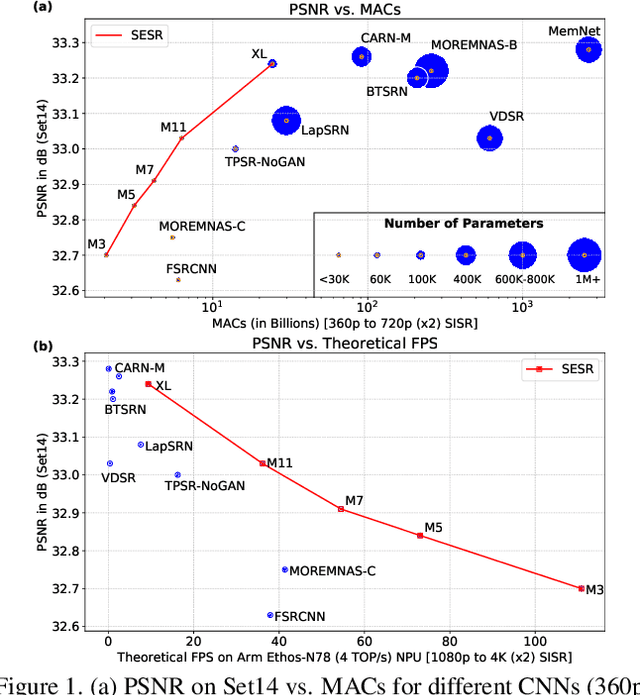
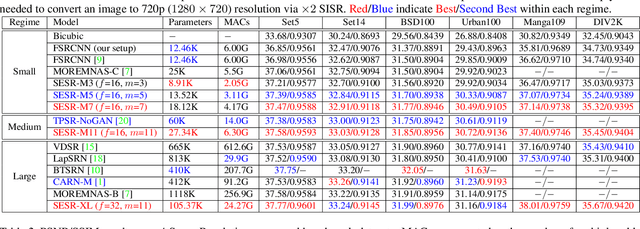
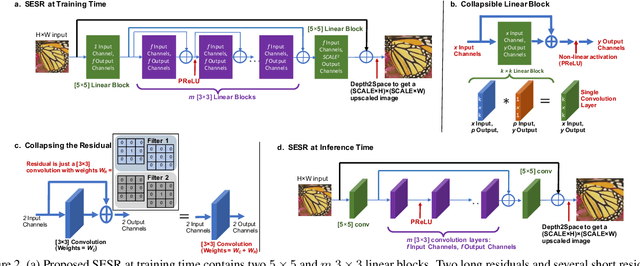

Abstract:With the advent of smart devices that support 4K and 8K resolution, Single Image Super Resolution (SISR) has become an important computer vision problem. However, most super resolution deep networks are computationally very expensive. In this paper, we propose SESR, a new class of Super-Efficient Super Resolution networks that significantly improve image quality and reduce computational complexity. Detailed experiments across six benchmark datasets demonstrate that SESR achieves similar or better image quality than state-of-the-art models while requiring 2x to 330x fewer Multiply-Accumulate (MAC) operations. As a result, SESR can be used on constrained hardware to perform x2 (1080p to 4K) and x4 SISR (1080p to 8K). Towards this, we simulate hardware performance numbers for a commercial mobile Neural Processing Unit (NPU) for 1080p to 4K (x2) and 1080p to 8K (x4) SISR. Our results highlight the challenges faced by super resolution on AI accelerators and demonstrate that SESR is significantly faster than existing models. Overall, SESR establishes a new Pareto frontier on the quality (PSNR)-computation relationship for the super resolution task.
 Add to Chrome
Add to Chrome Add to Firefox
Add to Firefox Add to Edge
Add to Edge